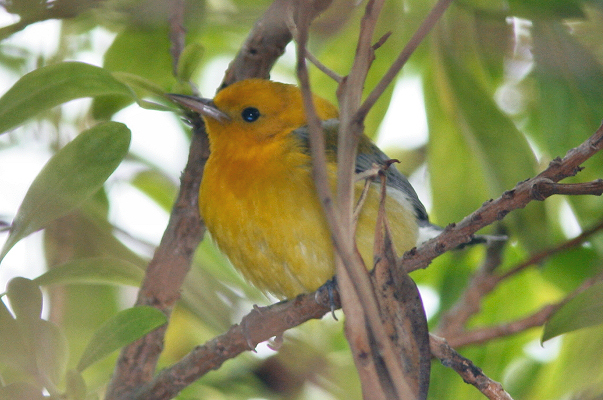
Date: 2005-11-06
Lens: Canon 300mm IS F4 + 1.4x II Converter

 Prothonotary Warbler
Protonotaria citrea
Prothonotary Warbler
Protonotaria citrea
 Description
DescriptionThe Prothonotary Warbler, an incredibly beautiful bird, is one of only two warbler species that breed in tree holes; Lucy's Warbler is the other. This may be an adaptation to a habitat where tree holes are numerous, but where dense bushes, the typical warbler nesting sites, are scarce. The name "Prothonotary" refers to clerks in the Roman Catholic church, whose robes were bright yellow.
Golden-orange head. Unmarked yellow breast and underparts. Olive back. Blueish-gray wings and tail. No wing bars. White undertail coverts. White spots on tail. Black eyes. Thin, pointed bill. Black legs. Sexes are similar, but head color is less golden and more yellow in females and immatures. ? inches in length.
Winters in woodland swamps and coastal tropical forests. Breeds in wooded areas near water; especially cypress swamps.
 Nesting
Nesting6-8 creamy white eggs with purplish spots. The eggs have a 12-14 day incubation period. Fledging occurs in 11 days. A tree cavity or other such hole is stuffed with moss to form a cup nest.